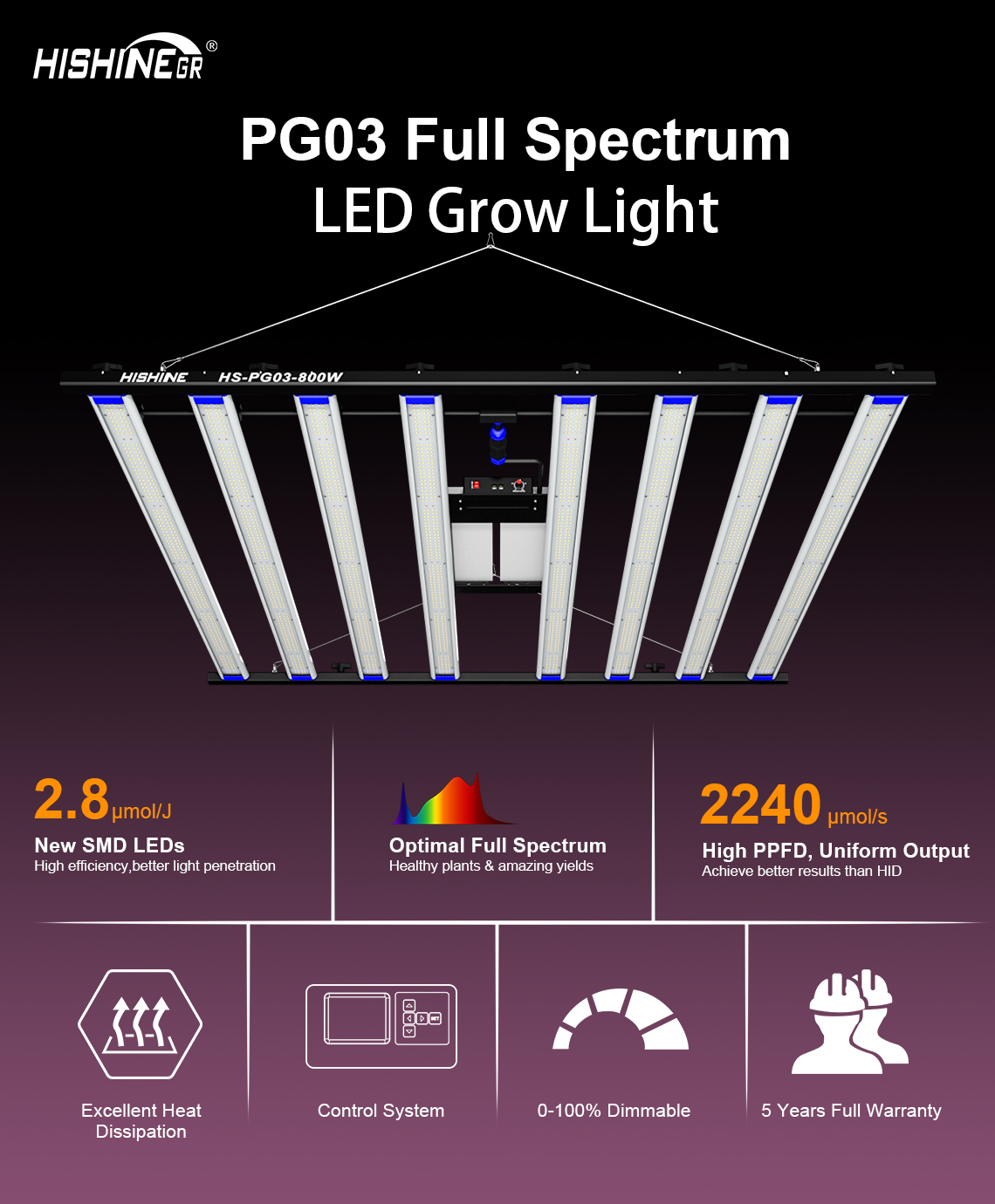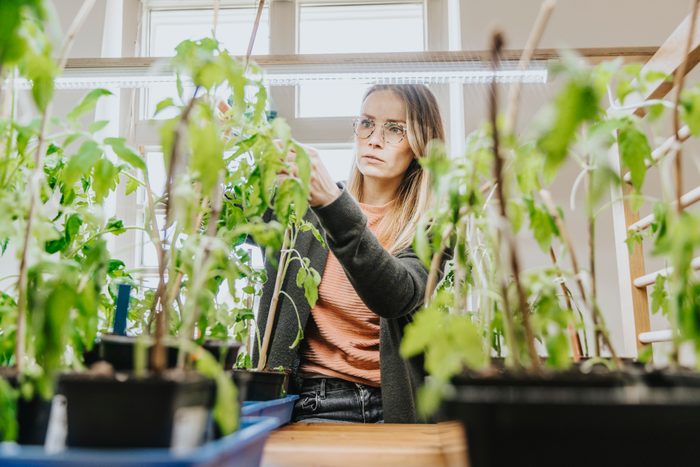LED plant growth lights are widely used in horticultural indoor cultivation. They mimic natural sunlight and help plants grow properly. However, since these are artificial light sources and have higher light intensity, a common question is whether LED grow lights will burn plants.
Like other LED lights, LED grow lights operate at the lowest temperatures and are less likely to burn your plants. However, improperly installed lights can burn your plants. For example, installing lights too close to plants, using LEDs with excessive power, turning on lights for longer than sunlight requirements, etc. In addition, inadequate ventilation, faulty wiring, and overloaded electrical wires can also burn plants.
Here, plant burning caused by LED grow lights means more than just a physical fire. Excessive light can also cause mild plant burns.
What are LED grow lights?
LED grow lights are designed to provide plants with artificial lighting that mimics the wavelengths of sunlight. The main purpose of using these lights is to promote photosynthesis in indoor gardening or horticulture. These fixtures provide different wavelengths of color depending on the different stages of plant growth. For example, the blue light spectrum of 400-500 wavelengths is suitable for the vegetative stage of plants. Likewise, during the flowering stage, you will need a red spectrum LED grow light with a wavelength range of 600-700 nm.
These fixtures are typically used on an industrial level in the food production industry. In addition to LEDs, other lighting technologies such as HID, fluorescent, and incandescent lamps can also be used as grow lights. But LED grow lights are the most popular variant as they produce the highest photosynthetically active radiation (PAR). Additionally, they are available in different colors; full-spectrum lights are also popular, such as LED grow lights. Best of all, LEDs are more energy efficient than other lighting technologies.
Hishine Group Limited is one of China LED grow light manufacturers, Hishine a series of grow lights. The PG03 grow light has 200W, 600W, 800W, 1000W 4 different wattage. PG03 is full spectrum horticultural LED solutions balance light quality(spectra) with light quantity(intensity and duration).

Will LED grow lights burn plants?
LED lights operate at the lowest temperatures and are less likely to overheat. In incandescent and halogen lamps, 90% of the energy is lost as heat. Therefore, these bulbs are more likely to burn plants. LED lights, on the other hand, convert about 95% of their energy into light, with only 5% emitted as heat. This allows them to operate at low temperatures and therefore are less likely to burn plants.
However, LED grow lights can sometimes burn your plants due to poor quality LED fixtures, faulty wiring, or improper installation. Now, burning vegetation here doesn’t necessarily mean a fire. Placing fixtures too close to plants may cause leaf burning and photobleaching. So if you choose the right LED to emit the right intensity of light and set it correctly at the right distance, you won’t burn your plants. If not, there is a chance it will be burned.

Situations in which LED grow lights may burn your plants
From the above, you understand that LED grow lights have less chance of burning your plants; in some cases, they may end up doing so. In this section, I will discuss some of the situations in which LED grow lights may burn your plants. Check the following points carefully to make sure you avoid the following situations to avoid burning your plants:
Light intensity is too high
Excessive light intensity often results in increased transpiration, which dehydrates the plant. Additionally, it can damage plant cells and cause leaf burning. This can eventually lead to bleached, browned or scorched leaves. Likewise, different types of plants have different light intensity requirements. For example, using the same light intensity to attract winter vegetables like cacti and Swiss chard won’t work. Cacti typically prefer high light intensities, in excess of 6,000 PAR units or 50,000 lux. Swiss chard, meanwhile, grows well at around 4,000 PAR units, or 15,000 lux. Therefore, if high-intensity light is used on Swiss chard, they may get burned.
Use low-quality grow lights
Low-quality LED grow lights have cheap drivers, LED chips, and heat sinks. As they claim, the use of such lamps does not give out the required lighting. Plant growth is highly dependent on light spectrum and wavelength. If the plant does not receive the appropriate wavelengths, growth may be interrupted. Additionally, due to poor cooling systems, the fixtures can overheat and eventually burn the plants.
Placing the device too close to plants
LED grow lights are designed to mimic sunlight. When you minimize the distance between the plant and the light fixture, the intensity of the light increases. It’s natural to burn them when they get too close to plants. Plants with thin leaves and plants without a wax coating on their leaves are more likely to be burned by light placed too close.
Incorrect electrical wiring
When installing LED grow lights, you may mess with the wiring, which could lead to a fire hazard. If you notice any flickering issues in your fixtures, consider and fix them as soon as possible. Additionally, dimming or fading of the light fixture may also indicate faulty wiring. Wires should be repaired immediately to avoid accidents. Here are some possible causes of fires in your gardening room related to LED grow light wiring:
1.The wire is cut too short
If the cord of your LED grow light is too short, it will create tension. This could tear the cable and cause a fire. Therefore, it is important to measure wires correctly to avoid wires that are too short.
2.unprotected wire
If the wire is too long and hung everywhere, it can also cause accidents. Therefore, it is better to use clamps or clamps to keep the wires looking compact and neat. This will ensure that the wires are not buried in the ground but are securely placed. Therefore, you can also prevent short circuits and arcing.
3.Amperage and wattage are inappropriate
LED grow lights come in different amps and wattages. You must purchase them according to the factory’s requirements. However, if the grow room’s wires and circuits cannot handle the wattage of the LED grow lights, a short circuit may result. Therefore, you must match the wattage of the fixture to the room’s power supply before wiring it. If it doesn’t match, consult a professional electrical engineer to rewire it.


LED grow lights overlap
When growing indoors, the number of lights used must be considered. If your room is small, consider reducing the lighting. Covering it with too much light will increase the temperature of the room and negatively affect your plant’s growth, rather than just burning it. For example, transpiration increases with increasing heat, and plants will face more water loss. You can notice changes in the color of your plants to determine if they are experiencing overheating issues.
Overexposure during seedlings or seedlings
The seedling stage of plants requires minimal light. Light intensity should be minimal in the early stages. This is the time when seeds germinate and roots and stems develop. If you use high-intensity lights and leave them on for long periods of time, you risk burning the plan. For example, most seedlings prefer 16 hours of light to germinate. But if exposed for longer than this, they may burn.
circuit overload
Hobbyists generally don’t care much about working with power cords and power connections. They often end up with too much wiring in a single plug-in. This can overload the circuit and cause a fire.
There are flammable items in the planting area
Fertilizers, pesticides or other liquids used in farming can produce flammable vapors. There are also risks associated with having paper, fabric, or other flammable materials around light fixtures. When LED grow lights overheat and come into contact with these flammable objects, they can catch fire, burning your plants.
Insufficient ventilation and heat dissipation
Although LED lights operate at low temperatures, they generate heat. As with indoor growing, they are still crowded and the room temperature rises quickly. Due to the lack of proper ventilation, the heat generated by the light fixture may be dissipated. As a result, the fixture overheats and may cause a fire.


One Response
Hi there, just became aware of your blog through Google,
and found that it is really informative. I’m gonna watch out for brussels.
I will appreciate if you continue this in future. Lots of people
will be benefited from your writing. Cheers!
Najlepsze escape roomy